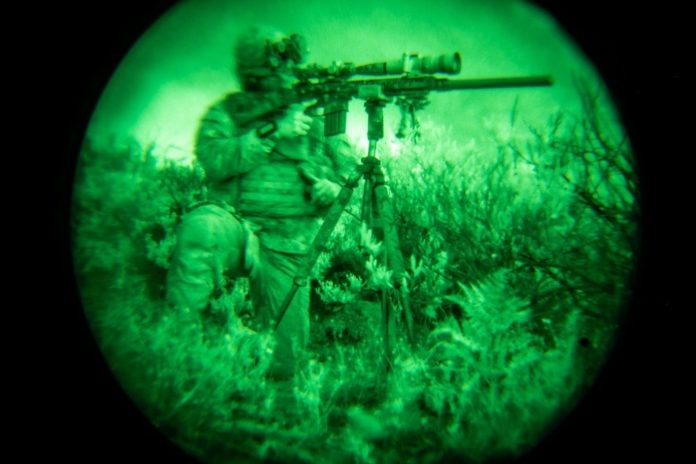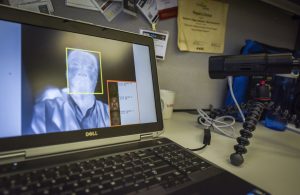
For many, normal facial recognition — used in the daylight — has become a facet of everyday life. Whether it’s for identity verification to unlock a smart phone, or trivial social media camera filters — it seems the technology is everywhere.
However, at the U.S. Combat Capabilities Development Command Army Research Laboratory just outside of Washington, D.C., scientists are on the forefront of bringing facial recognition technology into the future, capable of identifying figures in the dark, as experimental tests kick off.
The cutting-edge technology uses artificial intelligence, machine learning techniques, and state-of-the-art infrared cameras to identify facial patterns by using the heat signatures from living skin tissue any time of day, said Dr. Sean Hu, U.S. Army Research Laboratory Intelligent Perception Branch team lead.
Infrared light is an invisible, heat-sensitive energy that can be felt when warmth is emitted from objects.
At ARL, the Army’s corporate research laboratory, Hu — and a team of scientists who work collaboratively with industry and academia as well as other DOD organizations — have developed the initial algorithm to tie data into integrated software and hardware platforms that will eventually get into the hands of Soldiers.
The new technology, although nearly five years in the making, uses thermal imaging to detect the electromagnetic waves needed to distinguish heat signatures. Then, artificial intelligence is applied to the blurry thermal images to increase the quality of the image to render a photo-realistic composite and map key features of the face. AI is then used to compare the image with an existing data bank of mug shots.

“The technology provides a way for humans to visually compare visible and thermal facial imagery through thermal-to-visible face synthesis,” Hu said.
Once an infrared image is taken, the thermal technology will automatically cross-reference it against existing biometric face gallery databases and watch lists containing visible face imagery, he said, adding this will help Soldiers make quicker, safer and more intelligent decisions on the battlefield.
Right now, the algorithm used to couple the thermal imagery to the image databases are roughly 90% accurate on a controlled test dataset, Hu said, but further research into the applications will improve those numbers.
Facial recognition technology and thermal imagery are nothing new for the Army, but combining them is revolutionary.
Infrared is commonly found on Soldiers’ body-worn cameras, and in aerial and ground vehicles, Hu said. Conventional facial recognition software — typically in well-lit conditions using normal cameras — is used on the battlefield.
“Under nighttime and low-light conditions, there isn’t enough light to capture facial imagery without using artificial lighting, such as a flash or spotlight, without compromising a Soldier’s safety or giving up their location to potential enemies,” he said.
Force protection and surveillance applications motivate this research, he said, “We’re trying to help Soldiers identify individuals of interest to aid both tactical and strategic operations.”
As for now, ARL and its partners plan to continue maturing the algorithms and developing prototypes for experimental and then field testing in operationally relevant environments within the next two years.
from Defense News by DefenceTalk.com https://ift.tt/39ko8p4
via Defense News
No comments: